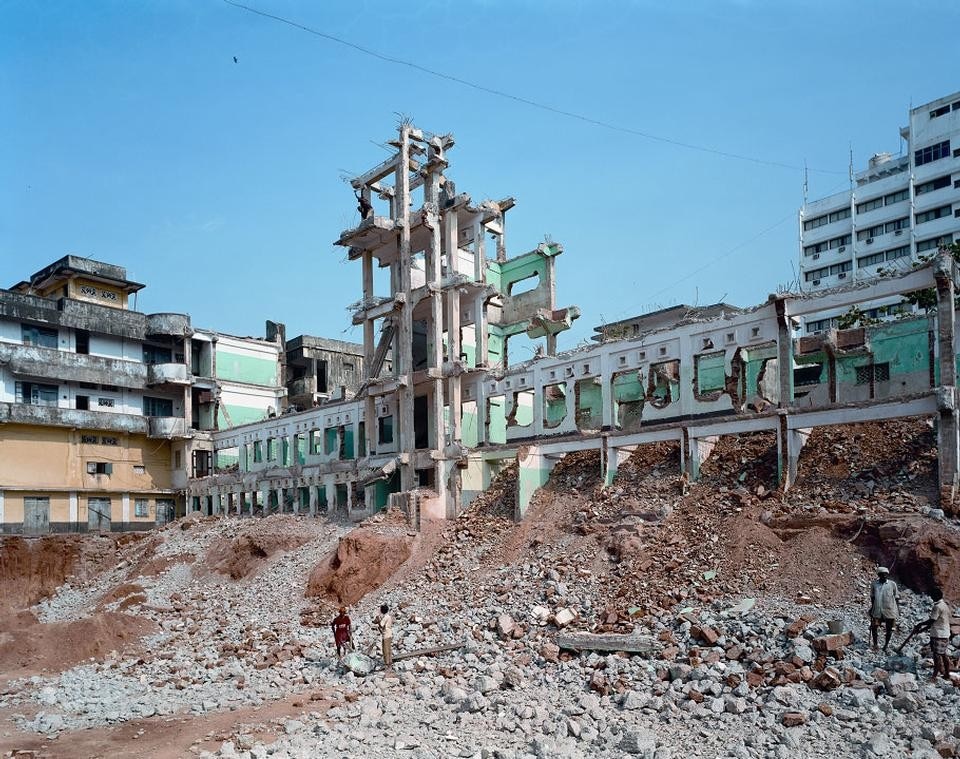The photographers in the Transitions exhibition at the British School at Rome belong to three different generations. Their images
register, in distinctive ways, the changing physiognomy of built space in Delhi in a period
that spans the transformation of the colonial metropolis (whose centre and inner radius
were architecturally defined by Edwin Lutyens) into a sprawling global megalopolis whose
periphery is at best provisional if not notional. The transition was already underway in the
immediate decades after India's independence from British rule, although the contrast
between the imposing architectural statement that was Lutyens' masterplan for the
imperial seat of government in the capital and the hybrid of indigenous and "international"
styles that made up the rest of the urban tissue was never as flagrant as it proved to be
from the early 1990s onwards.
For this is the moment when India is catapulted into
globalization, consequent upon the government's decision to liberalise its economic
policies and open the country to foreign investment. The profound structural changes in
the economy have transformed the complexion of life in the great urban agglomerations,
with a rapidly expanding middle class — with increasing spending power — hankering after
a "life style" that goes with the blandishments of consumer society and the culture of
entertainment. The transformation is most visible, of course, in the new expanded
cityscape, its boundaries increasingly porous to the terrain vague or indeterminate zone
where older forms of village life rub shoulders with the industrial belt.
The contrast is
striking between Madan Mahatta's graphic black and white photographs of certain
emblematic buildings, produced by some of India's leading architects in what used to be
the erstwhile centre of New Delhi and the generic architectural forms mushrooming on the
outskirts of the capital as well in those spaces within its perimetres made vacant by tearing
down the old bungalows built in colonial times. Space In-Between, the title of Bharat
Sikka's sequence of photographs captures this continually mutating aspect of the city, a
monstrous conglomeration perpetually in medias res, as it were. Yet another contrast is
underscored by Sleepers, Dhruv Malhotra's series of colour photographs focussing on the
unsheltered lives of large sections of the urban population in the precincts of the
proliferating housing estates and gated communities, labourers from rural areas come to
earn a living in the big city and making do with rogue dwellings or such non-places as
pavements and roundabouts, the spaces underneath flyovers and beside public walls, for
their nightly repose.
Deepak Ananth
11 to 31 May 2012
Transitions. Madan Mahatta, Dhruv Malhotra, Bharat Sikka
British School at Rome
via Gramsci 61, Roma
Transitions: three photographers in Delhi
On display at the British School at Rome, the work of photographers Bharat Sikka, Dhruv Malhotra, Madan Mahatta documents the evolution of Delhi in the last sixty years — from a colonial metropolis to today's sprawling global megalopolis.

View Article details
- 09 May 2012
- Rome